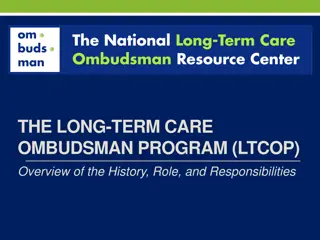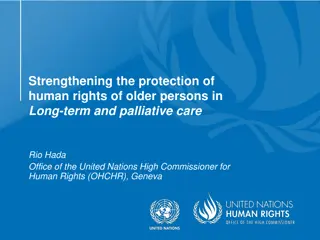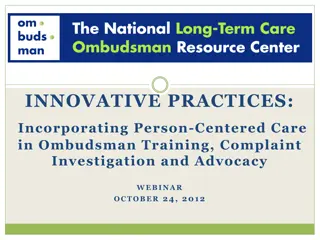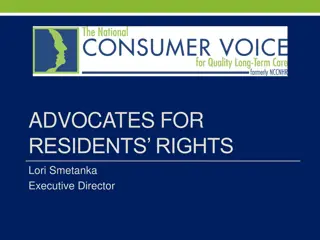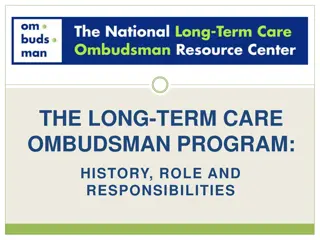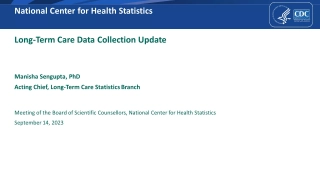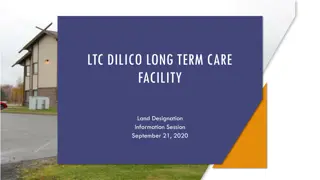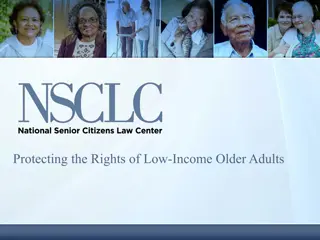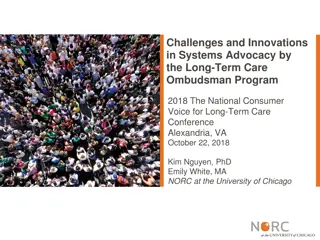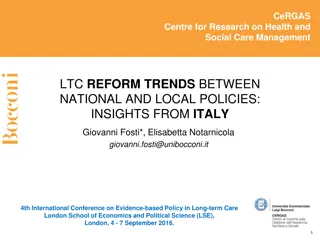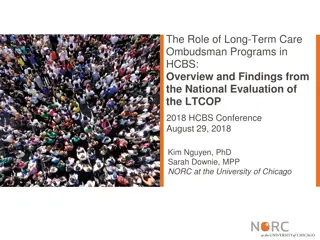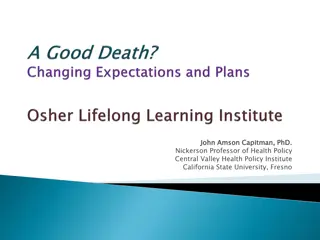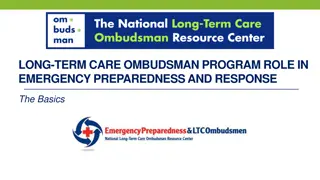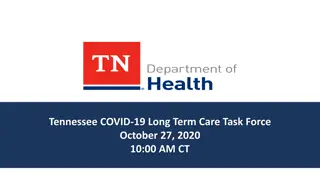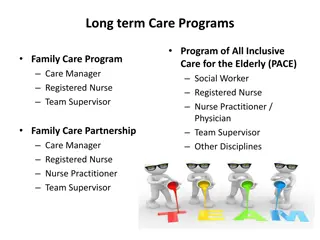Long-Term Care and Demographics: A Closer Look
Understanding the dynamics of long-term care and its impact on aging populations. The data highlights the need for services and support, especially within the context of longevity and changing demographics. Insights into Medicaid spending for acute and long-term care shed light on the growing challenges ahead.
Download Presentation

Please find below an Image/Link to download the presentation.
The content on the website is provided AS IS for your information and personal use only. It may not be sold, licensed, or shared on other websites without obtaining consent from the author. Download presentation by click this link. If you encounter any issues during the download, it is possible that the publisher has removed the file from their server.
E N D
Presentation Transcript
Long-Term Care Professor Timothy McBride Brown School Washington University in St. Louis July 2016 1
Longevity: A two-edged sword!! At birth: Life expectancy for women = 81.2 Life expectancy for men = 76.0 The average Missourian will live about a year less. At age 65 (Missouri): Life expectancy for women = 84.6 Life expectancy for men = 82.1 Living longer makes it more likely that you or your spouse or partner will, at some point, need services that could be paid for by long term care insurance. 2
Demographics of LTC Recipients Majority of LTC recipients live in the community Among the LTC recipients who receive care in their own home 74% live in the home with spouses or other family members Half have household income of less than 200% of the federal poverty limit Minority representation higher among LTC recipients 92% receive some help with ADLs from an unpaid helper (informal caregiver) 3 Source: Kaye, H. S., Harrington, C., & LaPlante, M. P. (2010).
Medicaid Acute and Long-Term Services and Supports Spending Per Enrollee, by Beneficiary Population, FY 2010 Long-Term Services and Supports $16,240 Acute Care $12,958 $3,615 $10,037 $3,025 $2,359 $9,344 $6,203 $3,012 $12 $63 $2,296 Children Non-Disabled Adults Elderly Ind. with Disabilities Under Age 65 Total: 32.5M 18.0M 9.7M 6.3M NOTE: Spending per enrollee figures are for all Medicaid enrollees, not just long-term services and supports users. Expenditures may not sum to total due to rounding. SOURCE: KCMU and Urban Institute estimates based on data from FY 2010 Medicaid Statistical Information System (MSIS) and Centers for Medicare & Medicaid Services (CMS)-64 reports. Because 2010 data were unavailable, 2009 MSIS data were used for CO, ID, MO, NC, and WV, and then adjusted to 2010 CMS-64 spending levels.
The Graying of America Percent of Total U.S. Population over 65 in 2000 Source of data: U.S. Census Bureau, State Interim Projections by Age and Sex: 2004-2030, 2005. Prepared by the UNC Institute on Aging
The Graying of America Percent of Total U.S. Population over 65 in 2030 A Nation of Floridas Source of data: U.S. Census Bureau, State Interim Projections by Age and Sex: 2004-2030, 2005.
Two-thirds of Americans ages 40 and older say they have done little or no planning for LTSS In 2005, only 1/3 of seniors had non- housing financial assets equal to the cost of a year in a nursing home 12
Expected value of all paid LTSS for a person turning 65 in 2005 is $47,000 13
Service Use Projections, 2000-2020 Nursing Homes Grow from 2.4 to 3.7 million users (54% growth) Alternative Residential Care 0.8 to 1.4 million (75% growth) Skilled Home Care 2.5 to 3.2 million (28% growth) Personal Care 3.2 to 4.2 million (31% growth) [Exhibit 11; Appendix G, Table 1]
How we pay for LT Care Using personal funds typically used first until funds run out Current income from wages, Social Security, or retirement income Reverse mortgage Single premium life insurance Long Term care insurance only about 10% of LT care recipients have this coverage Medicare Part B will cover some home health if part of plan certified by physician only provides short term percentage of LT care (does not include custodial care) Medicare covers 100% cost for first 100 days Provides 80% costs for next 80 days Provides no reimbursement for subsequent Medicaid once income eligibility is met, pays for most of the cost of LT care
Annual Median LTC Costs, Missouri $58,035 Nursing Home (pvt room) $152,863 $52,830 Nursing Home (semi-pvt room) $121,575 $27,450 Assisted Living (pvt, 1 bedroom) $64,247 2012 2037 $18,200 Adult Day Care $30,600 $37,071 Home Health Aide $41,184 $28,186 Homemaker Svcs $38,896 $- $40,000 $80,000 $120,000 $160,000 18 Source: http://longtermcare.gov/cost-of-care-results/?state=US-MO
Projected Long-Term Care Expenditures, 2000-2040 $346.1 $350.0 $295.0 $300.0 $250.0 $207.3 $160.7 $200.0 $123.1 $150.0 $100.0 $50.0 $0.0 2000 2010 2020 2030 2040 Source: CBO (1999)
20 9/11/2024
Conclusions Currently, there is no national system of long-term care insurance individuals must first rely on their own resources and then primarily on Medicaid Families play a critical role in provision of care and financing home care and nursing home Medicaid is the primary payer for long-term care services particularly nursing home care Private sector options are still limited and often costly The demand for long-term care will continue to grow -- the ACA, particularly the HCBS expansions, could make a huge difference 21



